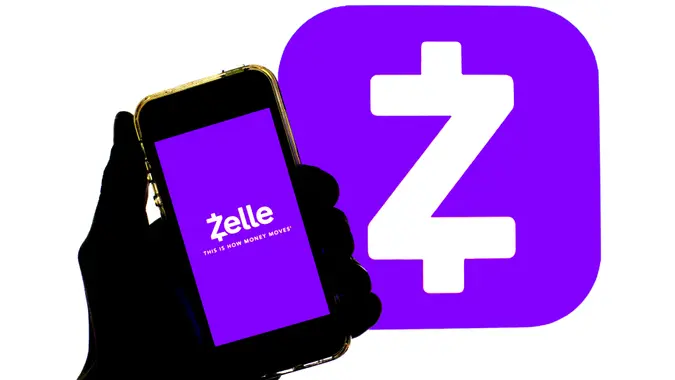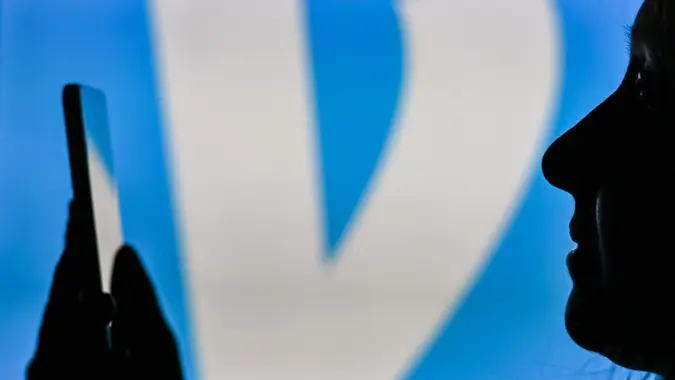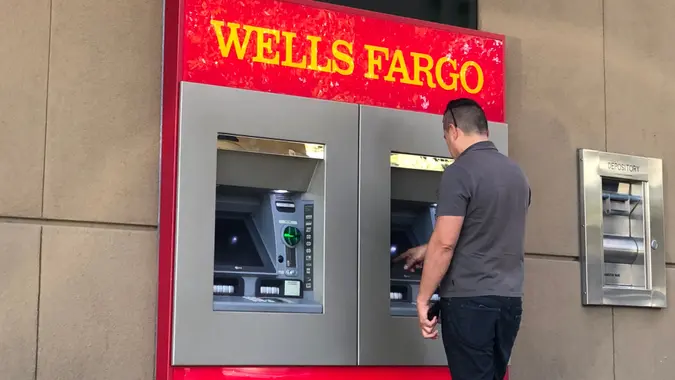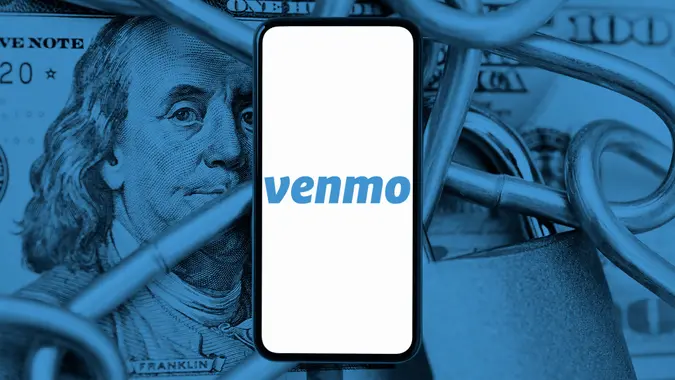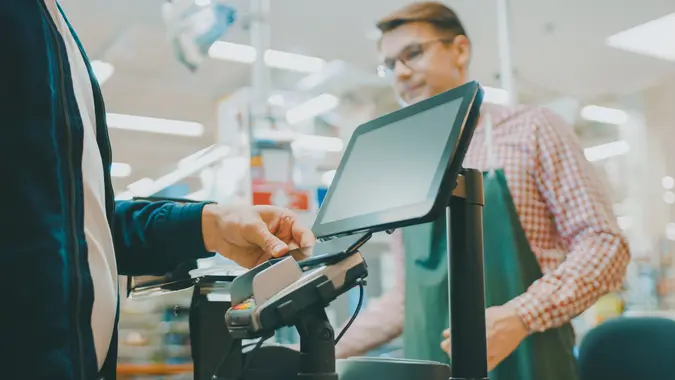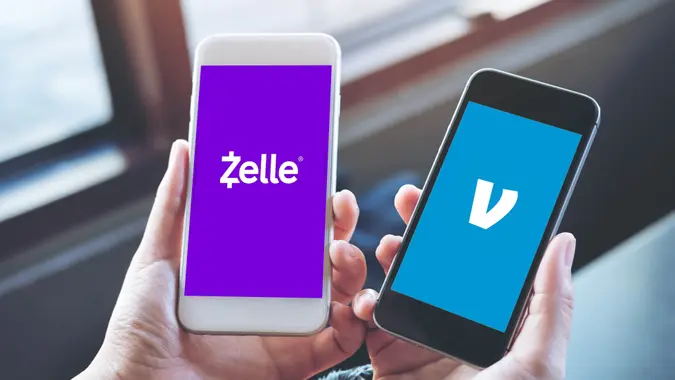How To Use Chase QuickPay: 5 Simple Steps

Commitment to Our Readers
GOBankingRates' editorial team is committed to bringing you unbiased reviews and information. We use data-driven methodologies to evaluate financial products and services - our reviews and ratings are not influenced by advertisers. You can read more about our editorial guidelines and our products and services review methodology.

20 Years
Helping You Live Richer

Reviewed
by Experts

Trusted by
Millions of Readers
Chase operates more than 4,700 branches and 15,000 ATMs across the country. Banking with Chase gives consumers access to a safe and easy online money transfer service through Chase QuickPay with Zelle. Read on to learn more about this feature and how to use it safely.
Read:
What Is Chase QuickPay?
Chase QuickPay was an online money transfer service that allowed individuals to easily pay almost anyone with a bank account.
While the process is the same, it’s important to know that Chase QuickPay has merged with payment service Zelle. However, the process remains the same.
Using Zelle, you can send money to anyone if you have their email address or phone number, even if they are not a Chase customer. The only restriction is that the recipient must have their own bank account within the Zelle network.
How To Use Chase QuickPay (Zelle)
As Chase QuickPay and Zelle have merged, it’s more proper to refer to Chase’s money transfer service as Zelle. After setting up Zelle through your Chase account, you can immediately start making online fund transfers.
Step by Step
To send or receive money with Zelle, you can follow these steps:
- Sign in to your Chase Mobile app.
- Choose “Send money with Zelle” in the navigation menu.
- Select “Get started.”
- Choose an existing recipient from your contacts or add a new one.
- Check the payment information for accuracy.
- Tap “Send Money” or “Request Money.”
Your recipient will then receive your transfer request or the money you sent.
How To Set Up Zelle With Chase Online Banking
If you already have a Chase checking account, follow these steps to set up Zelle through Chase online banking:
- Sign in to your online Chase account.
- Click “Pay” from the menu and choose “Zelle” from the drop-down.
- Read the service agreement and privacy notice carefully before you accept them.
- Verify your email address or phone number with a one-time code.
- Choose the checking account you want to use.
Now you’re all set and ready to send or request money using Zelle.
Is Chase QuickPay the Same as Zelle?
Simply put, Chase QuickPay and Zelle are different but connected — QuickPay transactions are completed through Zelle, but Zelle also works with other banks for their mobile transactions.
Since Chase QuickPay merged with Zelle, Chase now uses it to enable its mobile money transfer service. Transferring money between U.S. bank accounts has now become a quick and seamless process since Zelle partners with over 1,800 financial institutions.
Sending or Requesting Money Using Zelle With the Chase Mobile App
Once you’re enrolled in Zelle, you can conveniently access the service and transfer funds with ease.
How Long Before Funds Are Credited?
In most cases, Zelle transfers only take a few minutes to appear in the recipient’s account. This is likely if both parties are Chase customers or the recipient’s bank is part of the Zelle network and supports real-time payments. Transfers are also faster if the recipient is using the Zelle app. Otherwise, there may be a delay of one to two business days, with a possible delay of up to five business days.
If there is a delay, Zelle suggests that you double-check your Zelle profile enrollment and make sure that you provided the correct payment information. If you make a transfer to the wrong recipient, you can cancel the transaction only if the recipient is not enrolled in Zelle.
Chase Zelle Limit
There is no limit to how much money you can receive through Zelle, but there are limits on how much you can send, depending on your account type.
- Personal Chase checking account: You can send up to $5,000 per single transaction. Your daily limits may be adjusted based on your transaction history.
- Chase Private Client, Chase Private Banking and Chase Business Checking accounts: You can send up to $7,500 per transaction. Your daily limits may be adjusted based on your transaction history.
If you don’t use Zelle through your financial institution, you’ll have a weekly send limit of $500 on the Zelle app.
Can You Use Zelle Without a Chase Account?
You can use Zelle without a Chase account if you have an account with another bank that partners with Zelle.
Chase customers must open a Chase checking account to send and receive money using Zelle. They can access this service through the Chase online banking platform.
If you’re a Chase client and want to send money to someone not banking with Chase, it shouldn’t be a problem. As long as the recipient has an account with a Zelle-affiliated bank, you can make the transfer using the recipient’s U.S. mobile number or email.
Alternatives to Chase QuickPay (Zelle)
Zelle can be a convenient choice for existing Chase Bank customers, but it is not the only option when it comes to money transfers at the bank. Here are some of the most common alternatives you can use:
Bill Pay
If you’re paying a vendor, like your utility or cell phone provider, you can use Chase Bill Pay instead of Zelle.
If the recipient can handle electronic payments, they can get paid in 1 or 2 business days. Otherwise, Chase Bill Pay will send out a paper check. This can take 5 business days before it reaches the recipient.
Personal Check
Before the dawn of electronic payments, writing physical personal checks was the way most people sent money.
Although the use of electronic payments has skyrocketed, personal checks still work. In fact, many banks still automatically issue paper checks when you sign up for an account. So, if you are more comfortable with this traditional way of making payments, you can still write a personal check instead of using a payment service like Zelle.
Money Order
Money orders are essentially prepaid checks. You give a bank or other issuer the amount you want to send, and then you are issued a money order in the same amount.
You can then fill in who will receive the money, just as if the money order was a personal check. As the money order is funded by verified cash, it can’t bounce like a personal check This makes it a valuable transfer option for a recipient who may not know you.
Cashier’s Check
A cashier’s check is a special certified check issued directly by a bank that is as good as cash. Anyone you give this check to can cash it immediately, and the issuing bank guarantees the funds.
Some transactions, particularly in business or real estate, require the use of a cashier’s check to ensure that the money transfer is valid and that the check cannot bounce.
Even if you’re not required to use a cashier’s check, it’s still a valid method of payment for any transaction. Most banks charge a small fee to issue a cashier’s check.
Final Take
Zelle is a convenient and secure way to send and receive money without leaving your Chase online banking platform. It also allows you to transfer funds to over 1,800 other financial entities for free. So, when you need to send or receive money right away, using Zelle with your Chase online banking account is a great option.
FAQ
- Did Chase QuickPay become Zelle?
- To simplify, Chase QuickPay and Zelle merged to be referred to as Zelle. You can now Zelle friends and family directly from the Chase mobile banking app or website.
- How do I use Chase QuickPay on Zelle?
- Chase QuickPay and Zelle have been merged, so Chase's mobile money transfer service is now referred to as Zelle. Just set up Zelle through your Chase account, then you can immediately start making online fund transfers.
- Is Chase Zelle free?
- Chase does not charge customers any fees for using the Zelle service.
- What is Zelle and is it safe?
- Zelle is simply a way to send money from your Chase account to another individual using their email address or phone number. It's similar in many ways to other third-party money transfer apps, like Venmo or PayPal, although there are important distinctions between all of those services. The bottom line, however, is that they all facilitate moving funds from one person to another.Zelle is very safe to use, on multiple levels. First, when you transfer to another party, they do not see your account number, and vice versa. Zelle also uses authentication and monitoring features to keep your transactions safe.
- How does Zelle work with Chase?
- Zelle works by sending money electronically to other bank accounts. All you have to do is set up Zelle on your Chase bank account so you can start making hassle-free online transfers.
- Is Zelle secure?
- Using Zelle is relatively secure, since you don't need to access another app to make the transaction. All your account information and transaction details are kept within your online banking platform.
- How do I Pay with QuickPay?
- Chase QuickPay is now known as Zelle. To send money through Zelle, you first need to set it up in your Chase account. After doing so, you can follow these steps to transfer funds:
- Sign in to your Chase Mobile app.
- Choose "Send money with Zelle" in the navigation menu.
- Select "Get started."
- Choose an existing recipient from your contacts or add a new one.
- Check the payment information for accuracy.
- Tap "Send Money" or "Request Money."
- Chase QuickPay is now known as Zelle. To send money through Zelle, you first need to set it up in your Chase account. After doing so, you can follow these steps to transfer funds:
- Can I send $5,000 through Zelle?
- If you bank with Chase you will be able to send $5,000 through Zelle. With Chase Personal Checking accounts, the per transaction and daily limits are $5,000. Chase Private Client, Chase Private Banking and Chase Business Checking accounts have a Zelle transaction limit of $7,500. If you are using Zelle without a bank account, your transfer limit will be $500 per week.
- What is the difference between Zelle and Chase Bill Pay
- Zelle is meant as a person-to-person money transfer service, in which funds are transmitted electronically and are immediately available by the recipient. Bill Pay is used for monthly expenses like utilities or credit cards. Payments are made electronically or via paper check.
John Csiszar, Barb Nefer and Chris Ozarowski contributed to the reporting for this article.
Data is accurate as of Sept. 20, 2024, and is subject to change.
The information related to Personal Chase Checking account, Chase Private Client, Chase Private Banking, and Chase Business Checking was collected by GOBankingRates and has not been reviewed or provided by the issuer of these products/cards. Product details may vary. Please see issuer website for current information. GOBankingRates does not receive commission for these products.
Editorial Note: This content is not provided by Chase. Any opinions, analyses, reviews, ratings or recommendations expressed in this article are those of the author alone and have not been reviewed, approved or otherwise endorsed by Chase.
 Written by
Written by  Edited by
Edited by 



